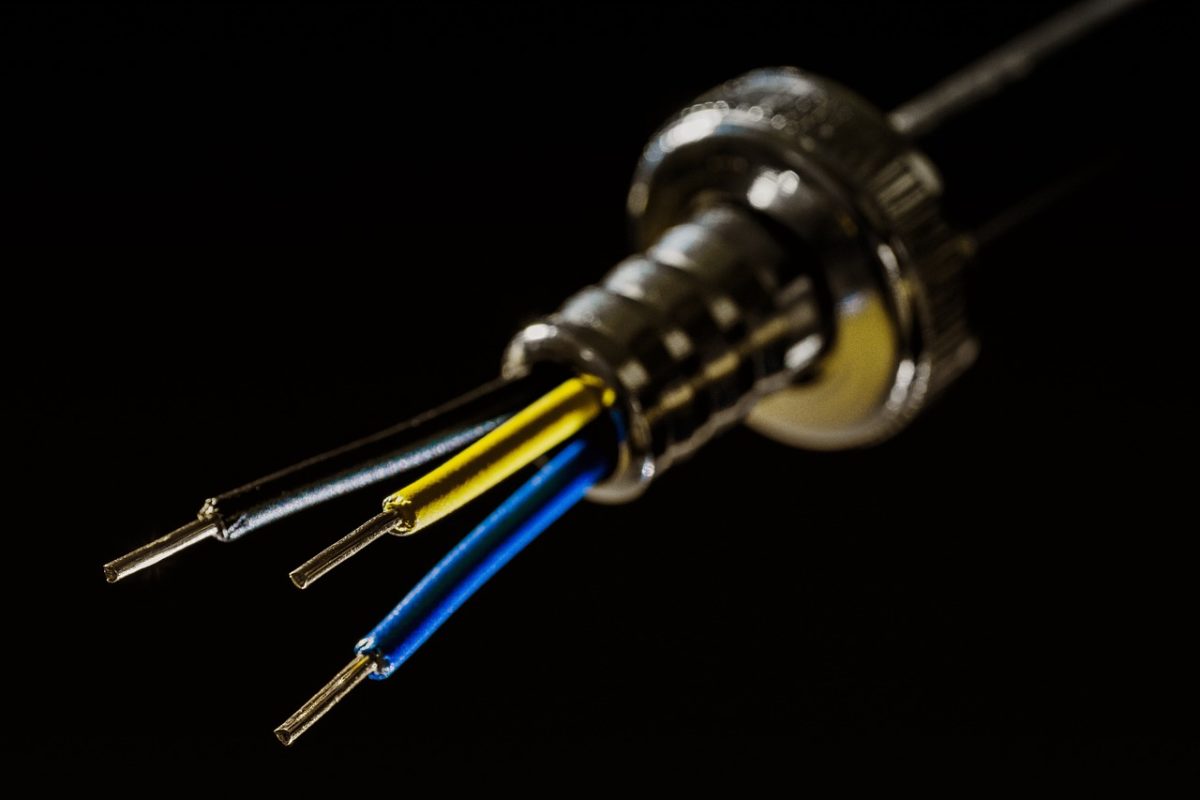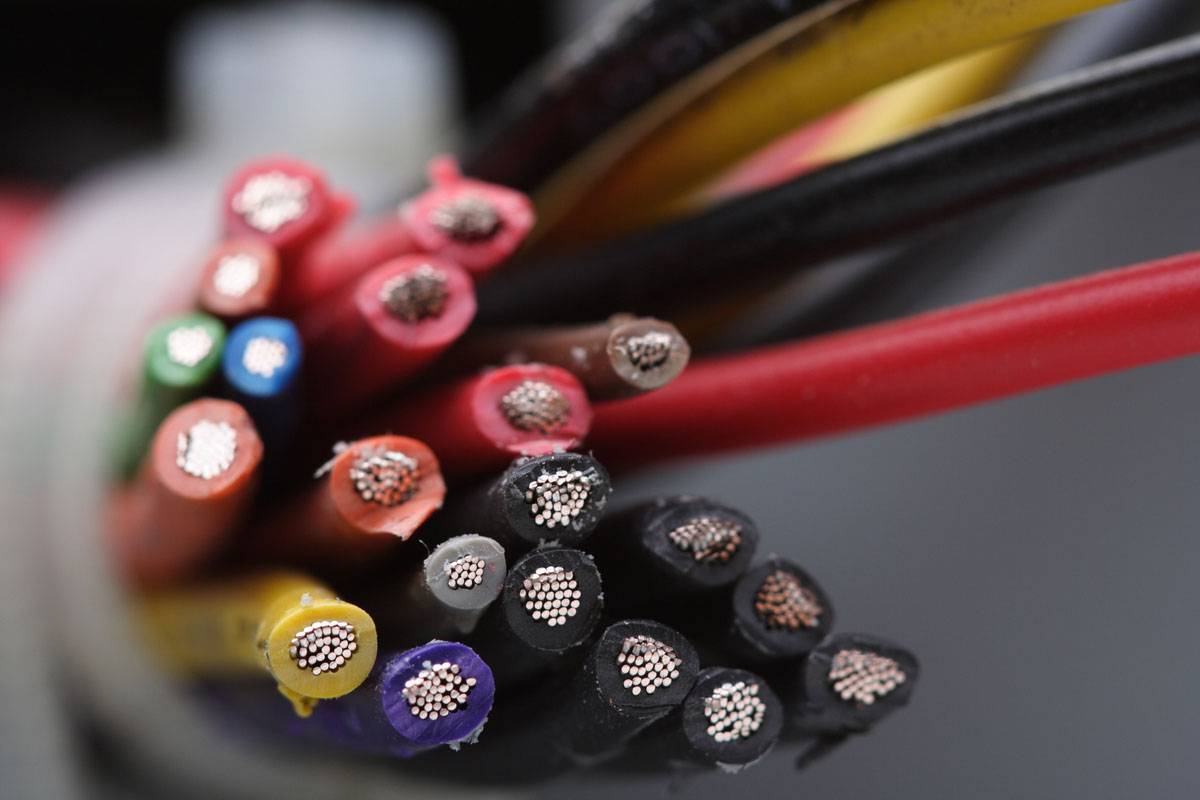In the controverting subject of “Solid conductor VS the stranded conductor wire and cable”, one of the eye-catching differences is the resistance. You are undoubtedly aware that shielded and unshielded twisted pair copper cables can be purchased in either multi-core or solid-core configurations. When deciding which of two options to go with, there are a number of factors to take into account, such as the applicable standards, environment, and application, as well as the cost. Let's have a look at the differences as well as the factors to consider so that you can choose the type of cable that will work best for the installation that you have in mind.  The first distinction that can be made between stranded and solid wire cables is in the manner in which the cables are produced. Stranded wire and solid wire are both terms that refer to the physical structure of the copper conductors that are contained within the cable.
The first distinction that can be made between stranded and solid wire cables is in the manner in which the cables are produced. Stranded wire and solid wire are both terms that refer to the physical structure of the copper conductors that are contained within the cable.
- Each of the eight copper conductors in a twisted cable comprises numerous thin wires that are concentrically wound in a spiral like a rope. This creates the cable's signature twisted shape. In most cases, the number of wires and the gauge of litz wire is denoted by two numbers: the first number indicates the number of wires, and the second number indicates the gauge. For instance, a conductor with the designation 7X32 (sometimes written as 7/32) indicates that it is made up of seven strands of wire with a gauge of 32.
- A solid cable has eight conductors total, and each of those conductors is a larger wire than the others. When referring to solid wire, only one gauge number is used to denote the size of the conductor. For example, 24 AWG is used. The size of the solid conductor determines the size of the cable, regardless of whether it is a single pair cable, a two pair cable, or a four pair cable.
This brings us to the most noticeable distinction, which is the adaptability. Stranded cables are more flexible and can handle more bending than other types of cables, however the flexible wires in the terminations might break or become loose with time. Stranded cables also have a higher bending tolerance. Solid cables are more stiff and can break if bent too much or too often, but solid conductors keep their shape over time and Insulation Displacement Connectors (IDC) on connectors, patch panels, and junction blocks prevent this from happening. Having the appropriate measures of internal security in place Performance is one aspect that distinguishes stranded wire cables from solid wire cables, but it is not immediately visible. Solid cables, in general, are superior electrical conductors and offer superior and stable electrical characteristics over a wider frequency range. Additionally, the frequency range that these features are applicable to is significantly larger. They are also regarded to be stronger than twisted conductors because they have a smaller surface area, which makes them less sensitive to vibration and corrosion.  In addition, solid wire has the capacity to carry a greater current than stranded wire does. More gauge (thinner) conductors have a greater insertion loss than lower gauge (thicker) conductors. Twisted-pair cables have 20% to 50% higher attenuation than solid copper conductors (the difference is 20% for 24 AWG and 50% for 26 AWG). In addition, stranded conductors have a higher DC resistance than solid cables do. This is due to the fact that the cross-section of the stranded conductors does not consist entirely of copper but also contains some air. The battle between solid wire and stranded wire is still going on, and neither side appears to have an advantage. Because every variety of wire has a unique set of benefits and drawbacks when used for a certain purpose, it is impossible to determine which one is superior to the others. In a word, the following articles will assist you in determining which solution offers the most favorable combination of flexibility, routing, protection, spacing, costs associated with indoor and outdoor applications, and capacity (capacity). A wire that is stranded is one that is made up of multiple thin conductor strands bundled together (insulated twisted pair). They come in a variety of sizes to suit your needs, depending on the application. For instance, the wire sizes used in the United Kingdom are 3/0.029", 7/0.036", and 7/0.042", where the first number (such as 3 or 7) indicates the number of stranded conductors and the second part of the number (such as 0.029 ", 0.042") indicates the size of the conductor (i.e. 0.036" is 0.036 inches2). In the United States, the standard size of wire is denoted as 7/32, where "7" refers to the number of strands and "32" refers to the American Wire Gauge (AWG) size of the conductor.
In addition, solid wire has the capacity to carry a greater current than stranded wire does. More gauge (thinner) conductors have a greater insertion loss than lower gauge (thicker) conductors. Twisted-pair cables have 20% to 50% higher attenuation than solid copper conductors (the difference is 20% for 24 AWG and 50% for 26 AWG). In addition, stranded conductors have a higher DC resistance than solid cables do. This is due to the fact that the cross-section of the stranded conductors does not consist entirely of copper but also contains some air. The battle between solid wire and stranded wire is still going on, and neither side appears to have an advantage. Because every variety of wire has a unique set of benefits and drawbacks when used for a certain purpose, it is impossible to determine which one is superior to the others. In a word, the following articles will assist you in determining which solution offers the most favorable combination of flexibility, routing, protection, spacing, costs associated with indoor and outdoor applications, and capacity (capacity). A wire that is stranded is one that is made up of multiple thin conductor strands bundled together (insulated twisted pair). They come in a variety of sizes to suit your needs, depending on the application. For instance, the wire sizes used in the United Kingdom are 3/0.029", 7/0.036", and 7/0.042", where the first number (such as 3 or 7) indicates the number of stranded conductors and the second part of the number (such as 0.029 ", 0.042") indicates the size of the conductor (i.e. 0.036" is 0.036 inches2). In the United States, the standard size of wire is denoted as 7/32, where "7" refers to the number of strands and "32" refers to the American Wire Gauge (AWG) size of the conductor.  Compared to solid wire, stranded wire is more flexible, making it an ideal option for applications that require the wire to be bent or twisted. Additionally, stranded wire is simpler to thread through the pipes and ducts that are found in the walls of a building. Stranded wire is an excellent choice for electricians. Because there are air gaps between the conductors, the heat that is generated within the conductors as a result of the current is quickly dispersed. This allows the current to travel safely through the twisted wire. Litz wire is also utilized in applications involving reoccurring motion, such as the opening and closing of doors, amongst other similar activities. These are superior choices for use over shorter distances, and they are simple enough to be inserted into jumpers. It's possible that you've also noticed that power transmission and distribution lines use stranded wire rather than solid wire. This is done to reduce the skin effect, which is the property of alternating current (AC) flowing on the outer surface of a conductor rather than across the entire conductor. Stranded wire is used because it's more flexible than solid wire. Stranded wire is an effective method for removing the skin effect from an electrical circuit. On the other hand, stranded wire is not only more expensive but also more susceptible to corrosion, particularly when used in applications that are exposed to the elements or in damp environments. In conclusion, stranded wire has a lower ampacity than solid wire of the same size. This is due to the fact that there is an air gap between the conductors in stranded wire, whereas solid wire does not have this air gap.
Compared to solid wire, stranded wire is more flexible, making it an ideal option for applications that require the wire to be bent or twisted. Additionally, stranded wire is simpler to thread through the pipes and ducts that are found in the walls of a building. Stranded wire is an excellent choice for electricians. Because there are air gaps between the conductors, the heat that is generated within the conductors as a result of the current is quickly dispersed. This allows the current to travel safely through the twisted wire. Litz wire is also utilized in applications involving reoccurring motion, such as the opening and closing of doors, amongst other similar activities. These are superior choices for use over shorter distances, and they are simple enough to be inserted into jumpers. It's possible that you've also noticed that power transmission and distribution lines use stranded wire rather than solid wire. This is done to reduce the skin effect, which is the property of alternating current (AC) flowing on the outer surface of a conductor rather than across the entire conductor. Stranded wire is used because it's more flexible than solid wire. Stranded wire is an effective method for removing the skin effect from an electrical circuit. On the other hand, stranded wire is not only more expensive but also more susceptible to corrosion, particularly when used in applications that are exposed to the elements or in damp environments. In conclusion, stranded wire has a lower ampacity than solid wire of the same size. This is due to the fact that there is an air gap between the conductors in stranded wire, whereas solid wire does not have this air gap.  We have a large selection of wire and cable available at prices that are consistently lower than those of the international market. Get in touch with us, and we'll give you pricing that's guaranteed to be lower than the market average. Submit an inquiry form and describe your needs; we'll get back to you right away.
We have a large selection of wire and cable available at prices that are consistently lower than those of the international market. Get in touch with us, and we'll give you pricing that's guaranteed to be lower than the market average. Submit an inquiry form and describe your needs; we'll get back to you right away.
